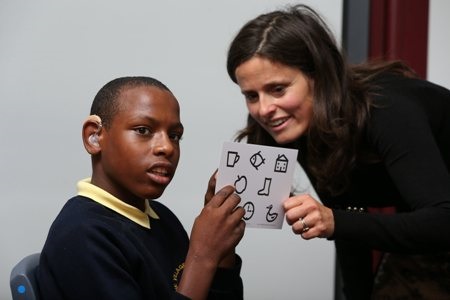Sep 22 2015
New research from SeeAbility, the national sight loss and disability charity, shows nearly four in ten (37%) pupils attending special schools have no history of eye tests. This alarming figure is made worse as children with learning disabilities are 28 times more likely to have serious sight problems than other children.

There are 14,650 students in special schools in the North West and if these findings are replicated across the region 5,421 children with disabilities are missing out on the eye care they need. With 100,000 children in special schools in England the figure could reach 37,000 nationwide. If eye problems are undetected children’s sight will be at risk.
The statistics are in the new report ‘An equal right to sight’ from SeeAbility, published today (Friday 18th September) as part of their Children in Focus Campaign launch. SeeAbility says it’s unacceptable that there is no national plan to meet the eye care needs of children with disabilities.
“We are calling on the government to make sight tests available in every special school in England. Children with profound disabilities may not be able to tell someone they have a sight problem, or get to a high street optician. Let’s bring much needed eye care to them instead,” says David Scott-Ralphs, SeeAbility Chief Executive.
“We want people to join our Children in Focus Campaign and sign the petition on our website. This will be handed in to the Department of Health as this is a major health inequality that the government and NHS have a responsibility to address.”
The report draws evidence from the charity’s research project with Cardiff University’s School of Optometry and Vision Science. SeeAbility’s team has been delivering specialist sight tests to pupils in a cluster of London based special schools since October 2013. The pilot scheme has since extended to seven schools.
SeeAbility gave Brandon – a pupil at one of the pilot schools – his first ever sight test at the age of 16. It was found that he could not see out of his right eye. While the charity can do nothing but support Brandon, they have been able to dramatically improve the lives of other children.
Lana has profound disabilities and cannot move or speak. Her sight test revealed that her vision is blurred, but Lana’s new glasses allow her to focus better and access a high tech system called an Eye Gaze. It means she can now communicate with her world.
David Scott-Ralphs continues:
The government needs to make it easier for children with disabilities to get a sight test. Making sight tests available in every special school in England would be a start in making the reforms needed and help thousands of children with disabilities.
Watch the Campaign video at https://www.youtube.com/watch?v=grlsEsXEPeI.